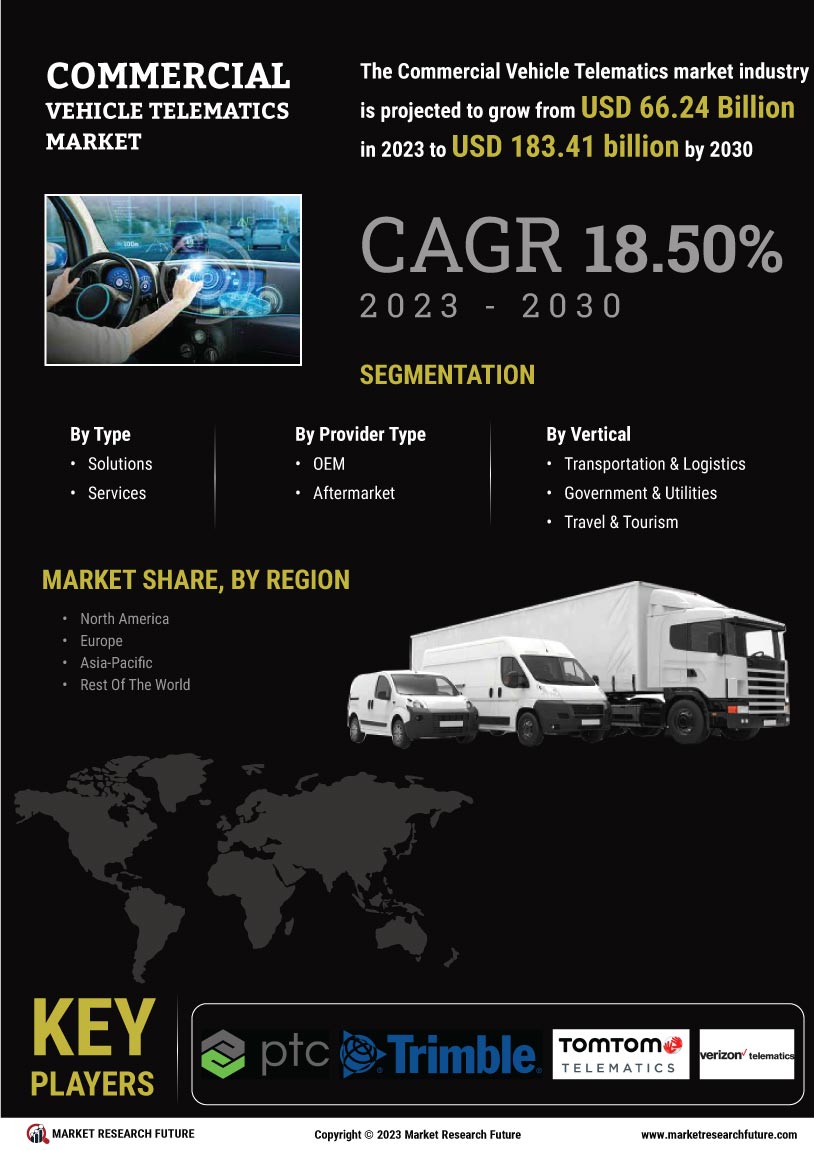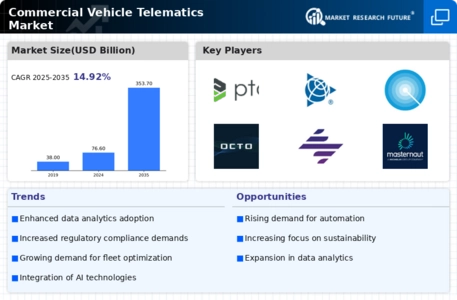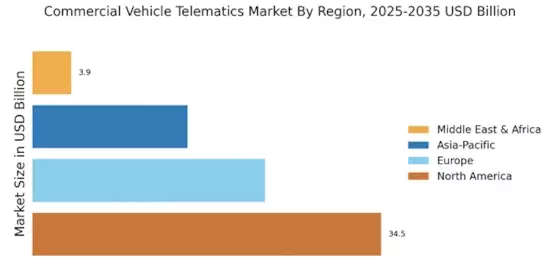The Commercial Vehicle Telematics Market is currently characterized by a dynamic competitive landscape, driven by technological advancements and an increasing demand for fleet efficiency. Key players such as Geotab (CA), Verizon Connect (US), and Samsara (US) are at the forefront, each adopting distinct strategies to enhance their market positioning. Geotab (CA) emphasizes innovation through its robust data analytics capabilities, while Verizon Connect (US) focuses on integrating telematics with broader IoT solutions. Samsara (US) is leveraging its cloud-based platform to provide real-time insights, thereby enhancing operational efficiency for fleet managers. Collectively, these strategies not only foster competition but also push the market towards greater technological sophistication and customer-centric solutions.
In terms of business tactics, companies are increasingly localizing manufacturing and optimizing supply chains to enhance responsiveness to market demands. The competitive structure of the Commercial Fleet Telematics Market appears moderately fragmented, with several players vying for market share. However, the influence of major companies is substantial, as they set benchmarks for innovation and service delivery, thereby shaping the overall market dynamics.
In August 2025, Geotab (CA) announced a strategic partnership with a leading electric vehicle manufacturer to integrate telematics solutions tailored for electric fleets. This collaboration is poised to enhance the operational efficiency of electric vehicles, aligning with the growing trend towards sustainability in transportation. Such partnerships not only expand Geotab's service offerings but also position the company as a leader in the transition to greener fleet solutions.
In September 2025, Verizon Connect (US) launched an advanced AI-driven analytics tool designed to optimize fleet performance and reduce operational costs. This tool utilizes machine learning algorithms to provide predictive insights, enabling fleet managers to make informed decisions. The introduction of this technology underscores Verizon Connect's commitment to innovation and its strategic focus on enhancing customer value through advanced analytics.
In July 2025, Samsara (US) expanded its The Commercial Vehicles Telematics Market, establishing a new regional office in Germany. This move is indicative of Samsara's strategy to capitalize on the growing demand for telematics solutions in Europe, particularly in the logistics and transportation sectors. By localizing its operations, Samsara aims to better serve its European clientele and adapt its offerings to meet regional needs.
As of October 2025, the Commercial Vehicles Telematics Market is witnessing significant trends such as digitalization, sustainability, and the integration of artificial intelligence. Strategic alliances are increasingly shaping the competitive landscape, as companies collaborate to enhance their technological capabilities and service offerings. Looking ahead, competitive differentiation is likely to evolve, with a pronounced shift from price-based competition to a focus on innovation, technology, and supply chain reliability. This transition suggests that companies that prioritize these aspects will be better positioned to thrive in an increasingly competitive environment.
In October 2025, Cummins, Bosch, and KPIT expanded their telematics collaboration, integrating advanced data systems for commercial vehicles. The partnership enhances diagnostics, connectivity, and real-time fleet insights. It supports the shift toward smarter and more efficient heavy-duty transport operations.
In September 2025, Geotab acquired Verizon Connect’s Europe and Australia fleet business, significantly expanding its global telematics footprint. The move brings thousands of new fleet customers into Geotab’s network and strengthens its presence across two high-growth international markets.


















Leave a Comment